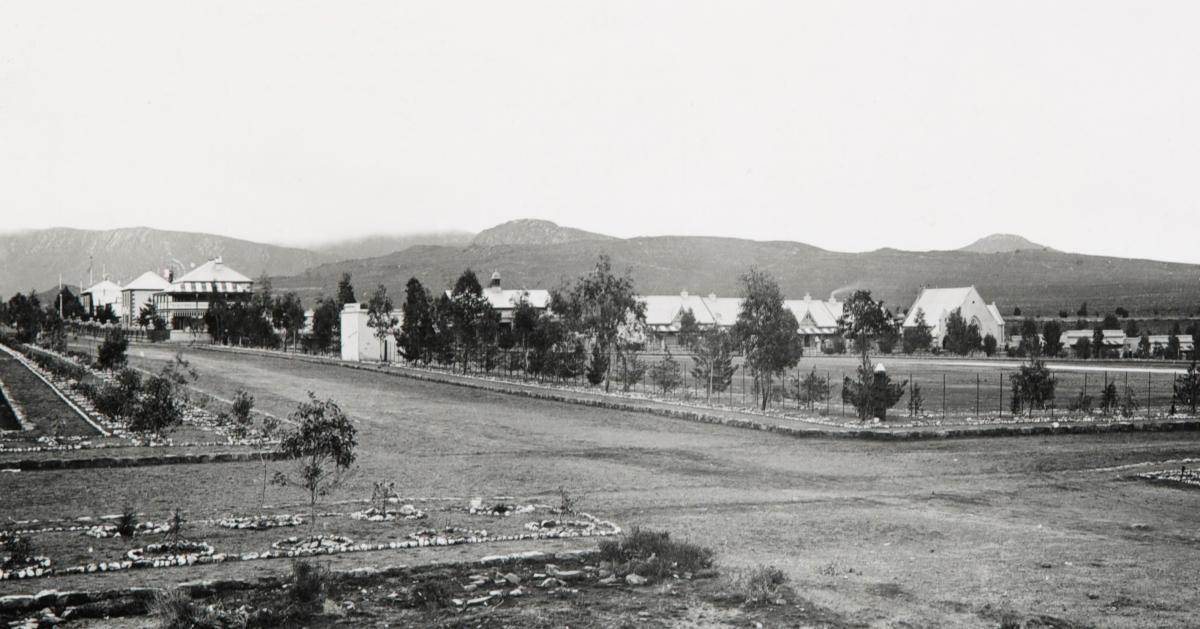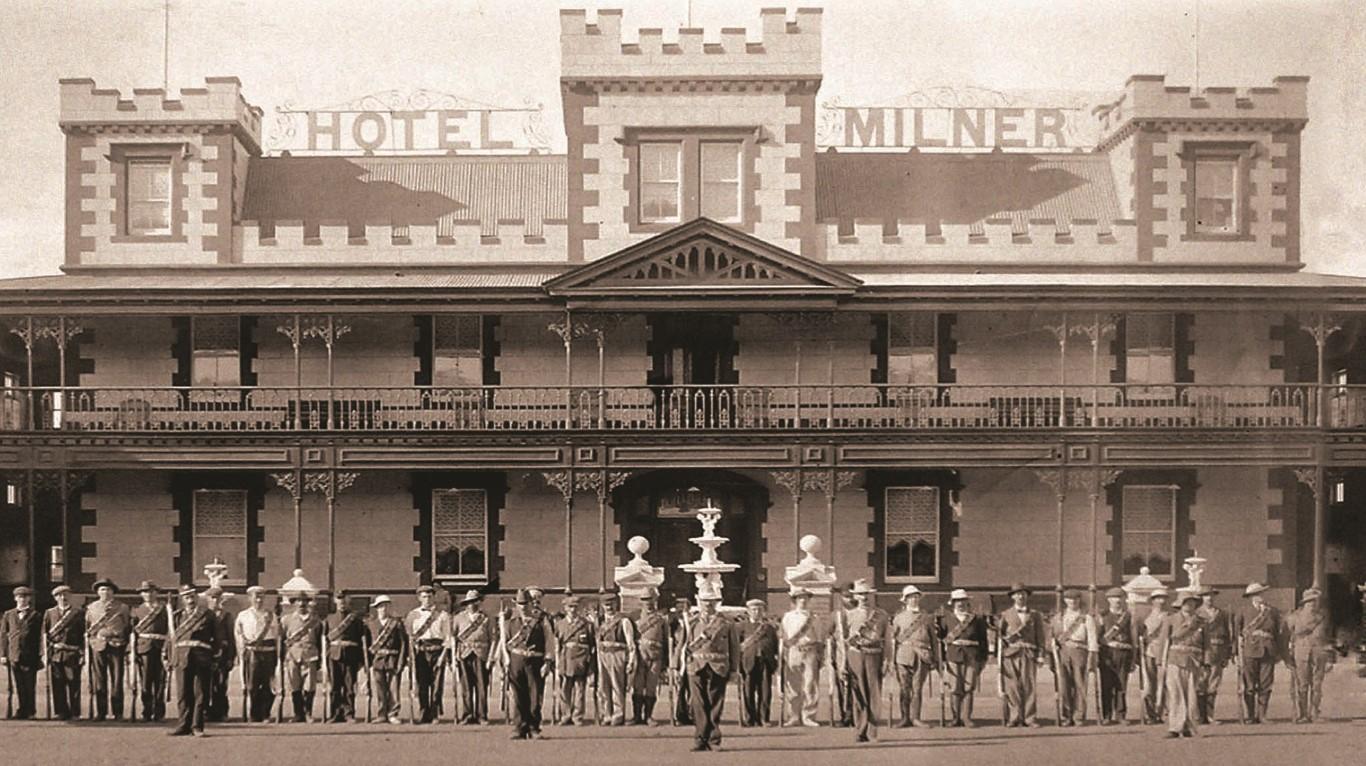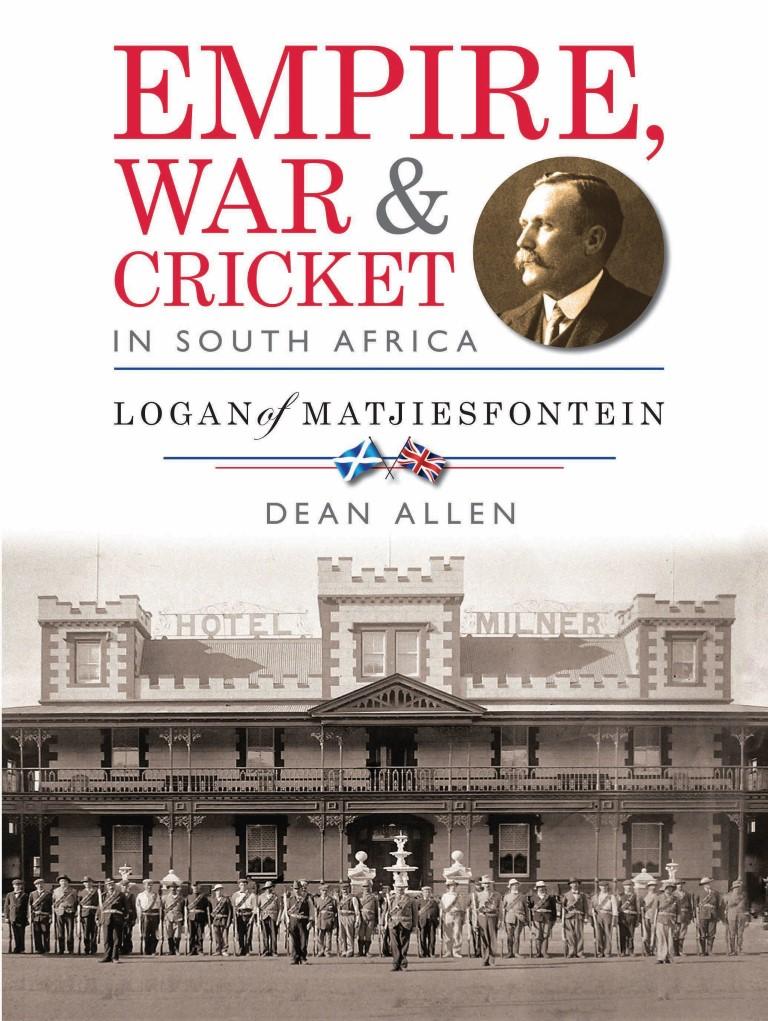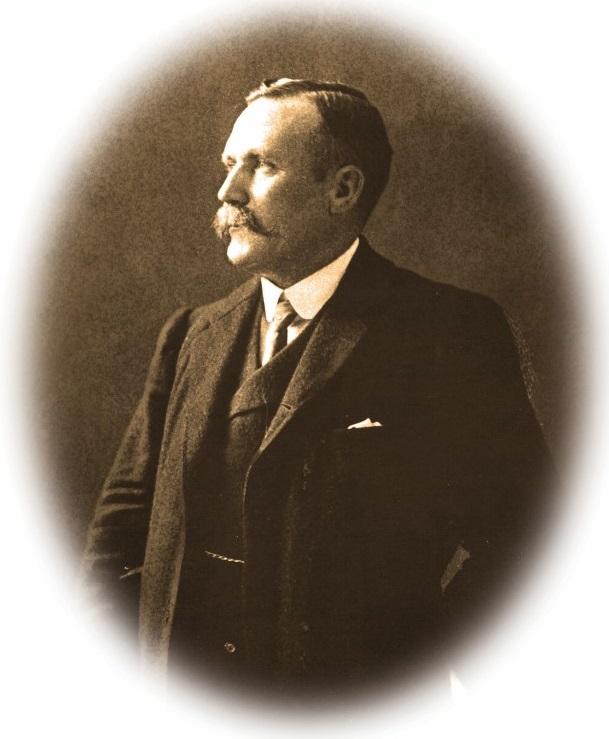
In June, Dr Dean Allen author and lecturer, delivered a wonderful lecture to members of the Johannesburg Heritage Foundation. The venue was Northwards and the setting perfect for a lecture that matched the period of the room so perfectly. The theme was the subject of this book and the lecture immediately made me want to reach for the book and read more about Matjiesfontein and the man who made the village. Better still a trip to Matjiesfontein to capture the town that has been restored to its pristine condition and enjoy the Victorian era ambience. I have visited Matjiesfontein but it was for no more than a breakfast at the Lord Milner Hotel as our family of four passed through in our campervan heading for Cape Town. That trip was more than twenty years ago.
Photo of the Lord Milner Hotel used on the book cover
Dean Allen started his talk by explaining how he had fallen in love with South Africa and has put down roots in the Cape (he is originally from England). His illustrated lecture enthralled the audience for an hour plus on themes that have become his speciality. He is an authority on the history of Matjiesfontein and is laird.
Matjiesfontein, situated 150km from Cape Town in the Karoo, was a creation of one man, James Logan who turned a railway siding into a model village, a cricket mecca, a health spa and the jewel in his own empire. Today the Lord Milner Hotel still draws visitors in search of the quaint and the curious. Those with imaginations expect to see ghosts and are determined not to be disappointed. The very name Matjiesfontein exudes atmosphere and invites you to step back into the colonial history of the Boer War period. It is a much loved small town on the tourist map and an ideal weekend away retreat for Capetonians or a romantic wedding venue. It has its own red London bus, London Street lamps, old petrol bowsers, a couple of museums, a fine hotel, billiard rooms and a pub. Oh, and a cricket pitch (see main image). Its graveyard captures history. It is a short distance from the highway and most importantly it is on the railway line. Matjiesfontein was the place to visit in the 19th century, particularly if you were a tuburculotic and suffering from that dreaded disease where the dry Karoo air could cure or at least extend your life. Today, I doubt though that one would want to spend more than a few days here; the place is quaint, fun but it is all morbidly time bound.
The book tells the story of a Scottish immigrant who came to South Africa in the 1870s to make his fortune in somewhat questionable ways. He was unusual in that he was not destined for the diamond fields of Kimberley or on to the gold mining option of Johannesburg. He did not become a Randlord nor did he have any special mining skills. His strengths were political manipulation, insider trading, a penchant for court cases and social climbing. From a humble working class beginning in Scotland, Logan rose speedily through the ranks in the Cape Government railways to shape his world as the laird of his own estate, to achieve wealth through manipulated government railway catering contracts, hotel ownership and a cricket impresario. Logan sought to become influential in 19th century colonial society. He came to run, control and make money out of a monopoly control of railway refreshment rooms from Cape Town to Kimberley and he allowed no one, including the Cape Government, to stand in his way. He rose to the height of his power and influence in the three decades from the late 1880s to the coming of Union. He determinedly became a big fish in a small pond, the Cape scene was his pitch and it was for more than just the sake of cricket. If Logan was so ambitious and as Rhodes saw him, a “creator”, why did he not move to the Transvaal.
Book Cover
I find it fascinating as to how and why South Africa attracted a man of this type. Was he just another young adventurer? Was wealth the objective? What motivated him? Was he the kind of person the colonial frontier society threw up? Certainly Logan was a man’s man, but also, and this got him into hot water, a ladies man, and hence defending himself in a rape case (which he won). Logan was flamboyant, opinionated, rumbustious, vindictive and a rather unpleasant man, who when crossed, ruthlessly used the courts to demand recompense.
Allen is to be admired for sticking with his lead character when he turned out to be not only a man with a dream and a determined achiever, but also a rather unprincipled odious character. He was a man who extracted every last political benefit from his well-placed charitable donations and his generosity to his guests.
All the key figures of South African society of the late 19th century knew Logan and he knew them – Rhodes, Randolph Churchill, Milner, Olive Schriener, Leander Starr Jameson, Joseph Chamberlain, Donald Currie. Logan was also a controversial political figure and, as mentioned, anyone who crossed him was likely to meet him again in court. He was intensely disliked by the liberals of the Cape, men such as John X Merriman (who at least gave rise to a political philosophy that contributed an important ethical strand to the shaping of South Africa). In fact I found the chapter dealing with the political machinations of Logan and his ambitions and how he brought down Rhodes’ first administration the most stimulating, but then I am not a cricket buff.
There is an interesting contrast between the careers of James Logan and James Sivewright; both were Scots and both were men who made money through deals and machinations, but Sivewright extended his influence to the Transvaal, became a Rand pioneer and was a key player in the supply of water to Johannesburg. Sivewright is another South African who needs a biography. He was an engineer and contributed far more than Logan to South African economic development. Sivewright owned Lourensford, the wine estate close to Vergelegen.
The section on the Boer War is also interesting as considering all the literature on the Boer War, Allen has something original to add on Matjiesfontein as the Cape Command headquarters and the Cape role in the war. I loved the way in which Allen, in the nicest possible way, knocks Logan’s heroism in the battles of Belmont and Modder River and presents a more truthful view.
Cricket is a major parallel theme of this book. Again this research adds to the history of cricket and the greats of the cricketing world who were friends of Logan - men such as W G Grace and George Lohmann, English cricketers who came to Matjiesfontein to play cricket or in Lohmann’s case die of TB. Allen contends that Logan developed the game of cricket in South Africa and certainly he promoted and expected to make money from cricket tours. In 1901 when the Anglo Boer War had not yet been concluded, Logan funded a South African cricket tour to England. Cricket, politics and money were grist to Logan’s mill. It was a seductive recipe and of course not as amateur as it seemed at first sight. Perhaps the explanation to all of this is that Logan wanted to shift himself from the “players” to the “gentlemens” category, but taking too many short cuts.
Dean Allen researched Matjesfontein and James Logan for several years. He had the luck and the bloodhound nose to seek out and find a rich seam of archival sources; he certainly pursued his prey in the archives and libraries of South Africa and the United Kingdom. His big find was to access the Logan family collection. He brings Logan to life warts and all. Allen’s thorough research resulted in a thesis which earned him a Ph D in history at Brunel University, London. There is an entry for J D Logan in the Dictionary of national Biography (Vol 2 p 410) and this describes him as a “hotelier and controversial figure“. Allen reveals Logan to be so much more and hence adds to the biographical history of a minor political player who could have done so much more for his adopted country.
A Portrait of James Logan
This book, published in 2015, turns a thesis into an immensely readable book that is an impressive addition to South African history and fits into collections on cricket, the Anglo Boer War, Cape political history and South African Railway history. The book is superbly illustrated with many contemporary photographs. It is a substantial work and well presented as a handsome volume. A great deal of effort has gone into including a chronology, a biographical glossary of key players, a detailed set of source notes, a bibliography and a careful index. The author is to be congratulated on producing a monograph that shifts academic research into a much more appealing and popular book.
Dean Allen
Kathy Munro is an Honorary Associate Professor in the School of Architecture and Planning at the University of the Witwatersrand. She enjoyed a long career as an academic and in management at Wits University. She trained as an economic historian. She is an enthusiastic book person and has built her own somewhat eclectic book collection over 40 years. Her interests cover Africana, Johannesburg history, history, art history, travel, business and banking histories. She researches and writes on historical architecture and heritage matters. She is a member of the Board of the Johannesburg Heritage Foundation and is a docent at the Wits Arts Museum. She is currently working on a couple of projects on Johannesburg architects and is researching South African architects, war cemeteries and memorials. Kathy is a member of the online book community the Library thing and recommends this cataloging website and worldwide network as a book lover's haven.



